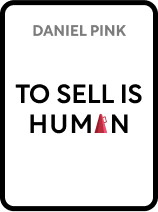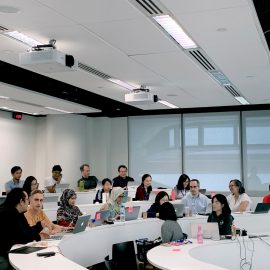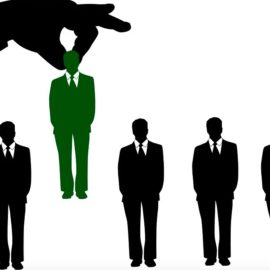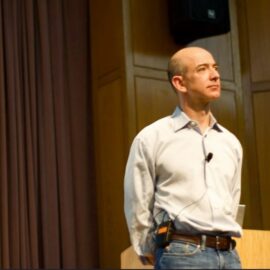

This article is an excerpt from the Shortform book guide to "To Sell Is Human" by Daniel H. Pink. Shortform has the world's best summaries and analyses of books you should be reading.
Like this article? Sign up for a free trial here .
What is Daniel Pink’s book To Sell Is Human about? What is the key message of the book?
To Sell Is Human explains the history, evolution, and significance of sales. Pink asserts that all people are salespeople, whether they like it or not. That’s because we’re always selling something—whether that be a product or ourselves.
Continue reading for our To Sell Is Human review.
To Sell Is Human Introduction
Our To Sell Is Human review starts with an introduction of the book’s ideas.
Are you a salesperson? You might be surprised to learn that the answer is “Yes.” Hate it or love it, in the modern world, we’re all selling something, and the value of sales skills has never been higher. To Sell Is Human explains the evolution and significance of sales. It challenges commonly held assumptions by redefining the meaning of sales and re-evaluating the role of the salesperson. Whether you’re in sales or not, it shows you how to effectively harness sales skills to influence others to action and create purpose or growth in your life (whether it be for personal or professional gain).
About Daniel Pink
Daniel Pink is a best-selling author of seven books exploring topics such as science, sales, economics, management, and human behavior. After going to law school at Yale, Pink built a multifaceted career, including a run as the host and co-producer of the National Geographic show Crowd Control, a guest editor at Wired, and chief speechwriter for former Vice President Al Gore.
Having conducted one of the most-watched TED Talks of all time, in which he breaks down the complexities of motivation, Pink is recognized as a thought leader on connections between science, business, and human behavior.
Connect with Daniel Pink:
The Book’s Publication
To Sell Is Human is Pink’s fifth book, published by Riverhead Books (an imprint of Penguin Random House Books US) in 2012, two years after the publication of Drive: The Surprising Truth About Motivating Others. Both spent significant time on numerous bestseller lists, with To Sell Is Human topping lists in The New York Times, The Washington Post, and The Wall Street Journal.
Historical Context
To Sell Is Human was published during an economically unstable time where a new type of selling was becoming a critical skill for everyone in the workforce. The Great Recession between 2007 and 2011 changed the workplace, creating the need for employees to develop diverse skills to ensure job security, influencing an explosion of entrepreneurship, and requiring us all to develop sales skills in order to influence others. The book arrived in 2012 in the midst of widespread economic uncertainty, with the U.S. debt fast approaching what by the end of the year would become a $1.077 trillion deficit. The presidential election of 2012 further contributed to the uncertainty, as the candidates’ perspectives on economic stimulation differed in extreme ways. Additionally, unemployment decreased over the course of the year, but not significantly enough to indicate genuine recovery.
Intellectual Context
According to Pink, two fundamental ideas underlie to Sell Is Human:
1) Everyone is engaged in selling of some kind (whether it’s traditional selling or contemporary selling). Pink describes selling broadly as the ability to move others to action. He considers selling to be an intrinsic human practice that is becoming increasingly valuable in the modern workplace due to an ever-changing economy, the rise of entrepreneurship, and the expansion of the education and medical industries. The lack of predictability in the economy requires the modern-day employee to wear many hats (in order to maximize company efficiency), rather than specializing, meaning everyone needs sales skills to remain competitive. Similarly, anyone engaging in entrepreneurship also needs to wear many hats, and all jobs within the ever-expanding education and medical sectors require influencing people to act.
2) The power in sales has shifted from the seller to the buyer, requiring the philosophy of sellers to evolve from profit to service. Sellers have less power because technology (namely, the internet) has given buyers access to product information that was previously available only to sellers. As a result, sellers need to focus on serving the interests of buyers, which means operating with greater integrity and attention to clients’ needs.
Pink’s ideas both overlap with and differ from other popular sales methodologies. For example:
- Jordan Belfort’s Straight Line Method, explored in Way of the Wolf, also speaks of moving buyers toward a sale, but in his approach, acting in service of the buyer is only one potential strategy, rather than the central one. In Belfort’s method, movement is achieved through any means of removing doubt and inspiring certainty.
- In The Challenger Sale, the authors define acting in service of the buyer not by meeting the buyer’s needs, but by educating and challenging them.
- In SPIN Selling, to act in service of the buyer means to identify and resolve their problems. In this method, you move the buyer by meeting their needs from a practical standpoint.
The Book’s Strengths and Weaknesses
Many readers praised the book for offering a fresh perspective on sales and a thought-provoking exploration of the value of empathy, service, and flexibility in the workforce. Also, reviewers cited the clear, well-researched presentation of its key ideas.
Critics, however, contended that it’s unremarkable because it offers information found in many other sales books, and in some cases, makes overly broad claims, such as the assertion that all interactions that involve an exchange of some kind fall under the category of sales. Alternatively, sales could be just one type of resource exchange, with service being another, and persuasion being a common feature of all types of exchange.
Commentary on the Book’s Approach
Ultimately, selling of any kind is about persuasion. “Moving others” means persuading them to act. The best way to persuade is by serving others’ needs. Rather than making a moral argument about serving the buyer for the sake of character, Pink is saying that when we focus on the needs of others, we know how to best inspire them to act (whether by purchasing a product from us, or by doing us a personal favor).
Pink argues that the most effective way to create the result you want is to make the “transaction” as meaningful and beneficial to the buyer as possible. Persuasion is the goal, being of service is the strategy for achieving the goal, and empathy is the most effective tool for that strategy.
Pink uses a straightforward organization, presenting well-researched ideas with narrative, humor, and experiential exercises. In part one, he argues that selling is both innately human and an intrinsic part of our day-to-day lives, encompassing not just the exchange of products or services for money, but any “transaction” that involves an exchange of resources. He explains why the definition of sales has changed and how the power balance has shifted. In part two, he explores the evolution of a seller’s role, contrasting the old school profit-driven sales approach (ABC or “Always Be Closing”) with a new approach: connection, optimism, and focus. Finally, in part three, he explains how to implement his model using a new type of sales pitch, improvisation, and a service mentality.

———End of Preview———
Like what you just read? Read the rest of the world's best book summary and analysis of Daniel H. Pink's "To Sell Is Human" at Shortform .
Here's what you'll find in our full To Sell Is Human summary :
- Why we are all salespeople in the modern world
- The history, evolution, and significance of sales
- How you can effectively harness sales skills to create purpose, growth, or “movement” in your life






